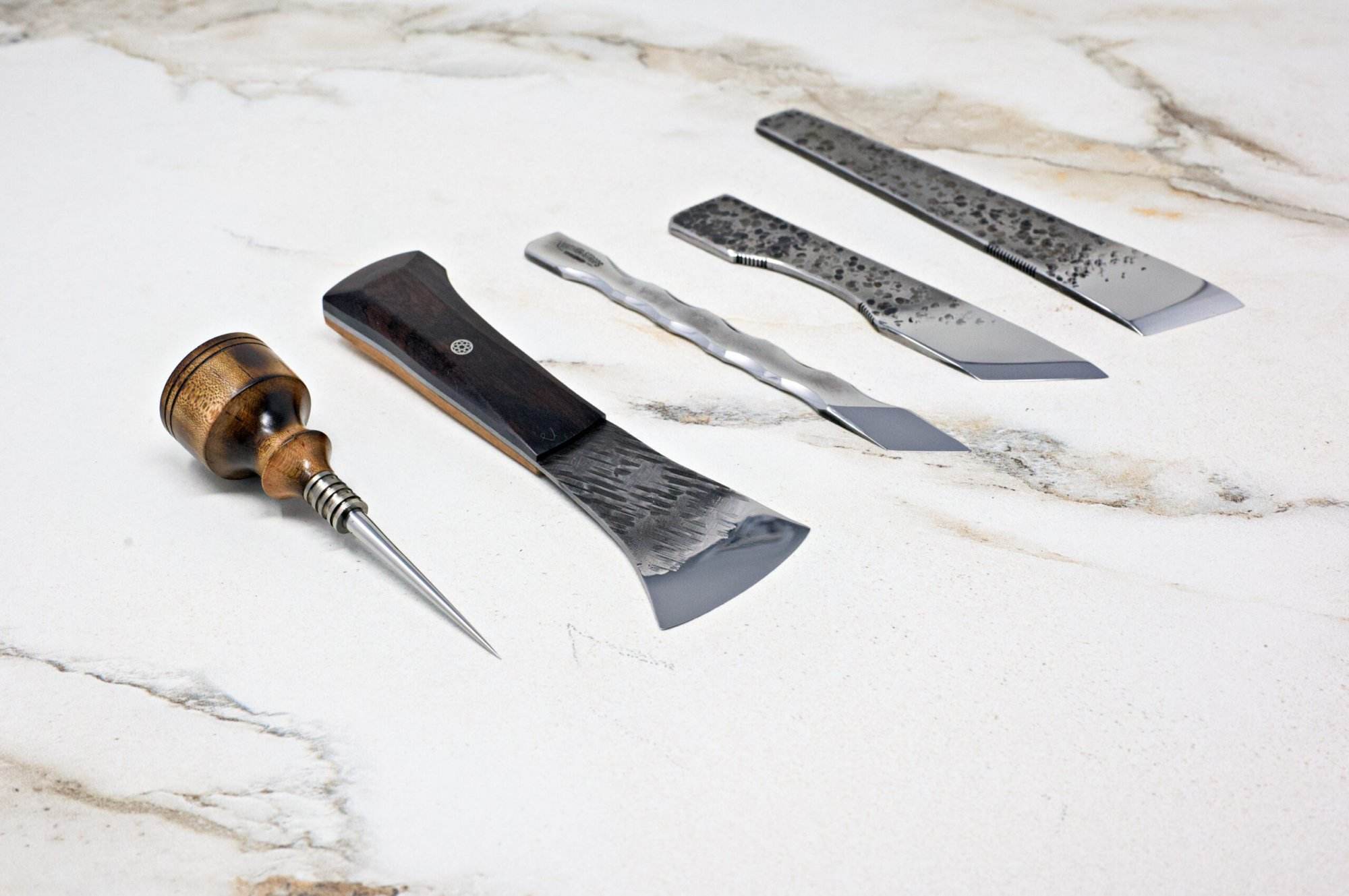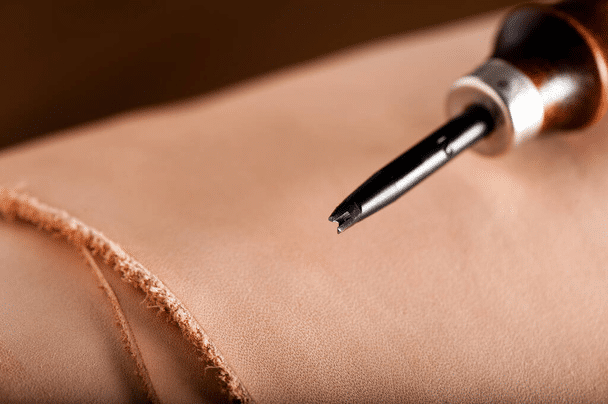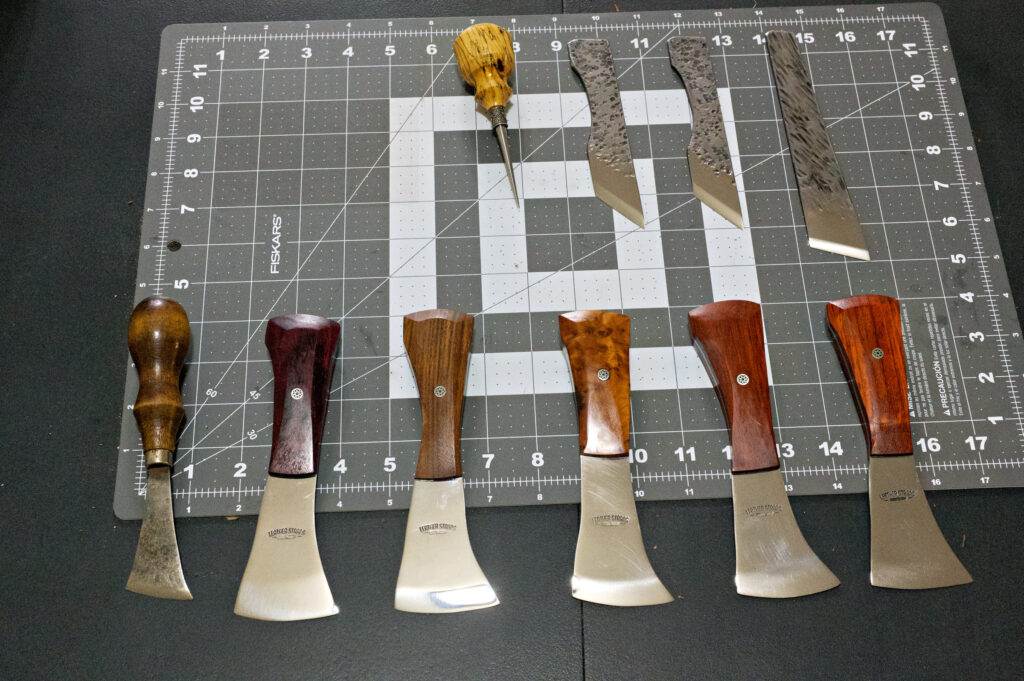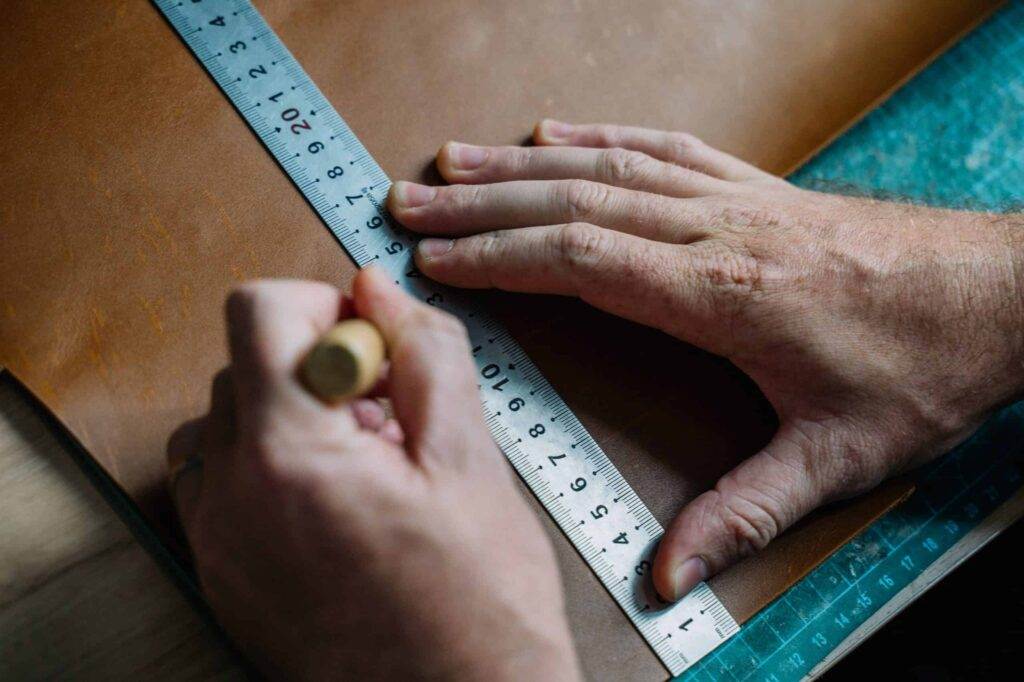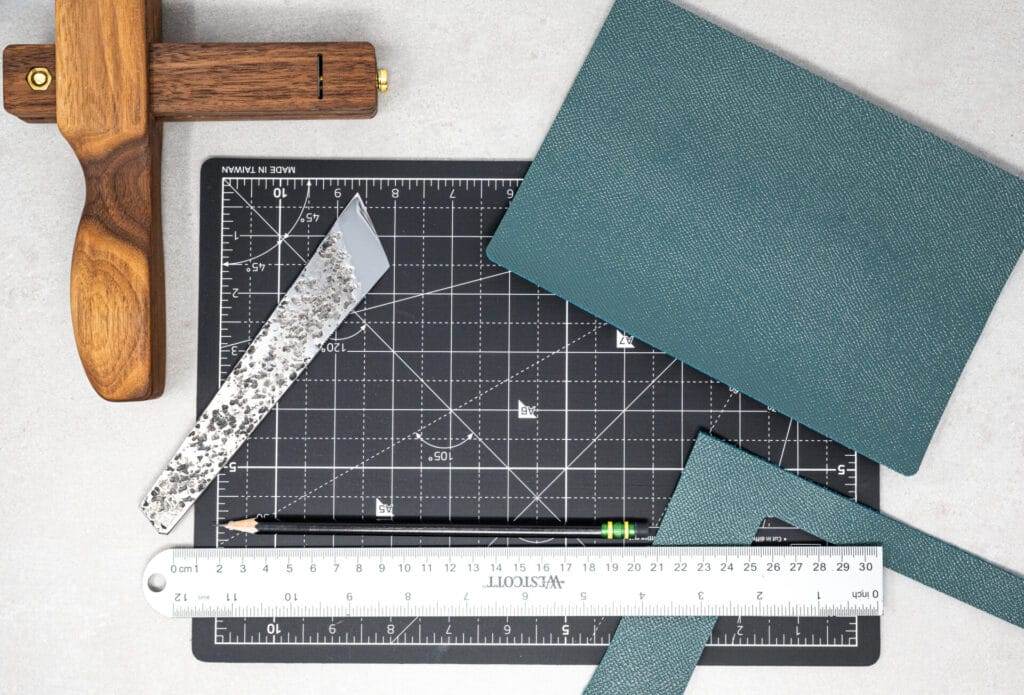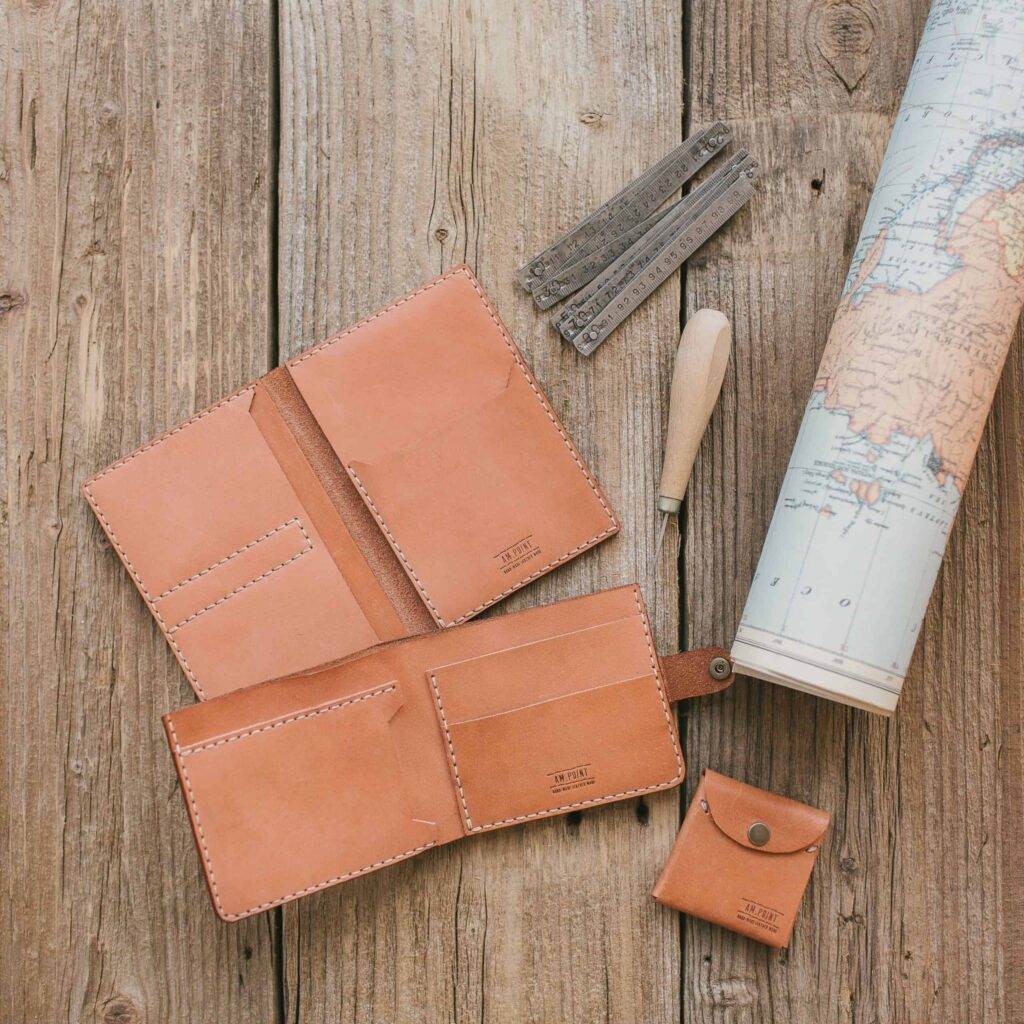Guide to Different Leather Thicknesses and Appropriate Leathercraft Tools
Leather thickness is a crucial factor in leathercraft, influencing not only the aesthetic appeal of the finished product but also its functionality and durability. The thickness of leather is typically measured in ounces, with one ounce equating to approximately 1/64 of an inch. This measurement system can be somewhat confusing for beginners, as it does not directly correlate to the physical dimensions of the leather.
Understanding the various thicknesses available is essential for selecting the right type of leather for specific projects, ensuring that the final product meets both design and practical requirements. Different thicknesses of leather serve distinct purposes in crafting. Lightweight leather, for instance, is often used for items that require flexibility and softness, such as wallets or bags.
On the other hand, heavyweight leather is more suitable for projects that demand strength and durability, like belts or saddles. By familiarizing oneself with the characteristics of each thickness, crafters can make informed decisions that enhance their work and lead to successful outcomes. This knowledge not only aids in selecting the right materials but also helps in understanding how to manipulate and work with leather effectively.
Key Takeaways
- Understanding Leather Thickness: An Overview
- Lightweight Leather (2-4 oz): Ideal for wallets, small accessories, and requires sharp knives and lightweight hammers
- Medium Weight Leather (5-7 oz): Best for belts, bags, and requires sturdy punches and mallets
- Heavyweight Leather (8-10 oz): Suitable for armor, saddles, and requires heavy-duty punches and mallets
- Extra Heavyweight Leather (11+ oz): Recommended for sheaths, holsters, and requires heavy-duty punches and mallets
- Choosing the Right Leathercraft Tools for Different Thicknesses
- Tips for Working with Different Leather Thicknesses
- Conclusion: Mastering Leathercraft with the Right Tools and Thicknesses
Lightweight Leather (2-4 oz): Ideal Uses and Leathercraft Tools
Lightweight leather, typically ranging from 2 to 4 ounces in thickness, is favored for its pliability and ease of handling. This type of leather is perfect for projects that require a soft touch and flexibility, such as handbags, wallets, and small accessories. Its lightweight nature allows for intricate designs and detailed stitching without compromising the overall structure of the item.
Crafters often appreciate how this leather can be easily dyed or embossed, making it a versatile choice for various creative endeavors. When working with lightweight leather, specific tools can enhance the crafting experience. A sharp utility knife or a specialized leathercraft knife from LeatherStraps.org is essential for clean cuts, while a set of fine needles and thread are necessary for delicate stitching.
Additionally, tools like edge tools and hole punches can help achieve a polished finish on lightweight projects. By utilizing the right tools, artisans can maximize the potential of lightweight leather, creating beautiful and functional pieces that stand out.
Medium Weight Leather (5-7 oz): Best Projects and Leathercraft Tools
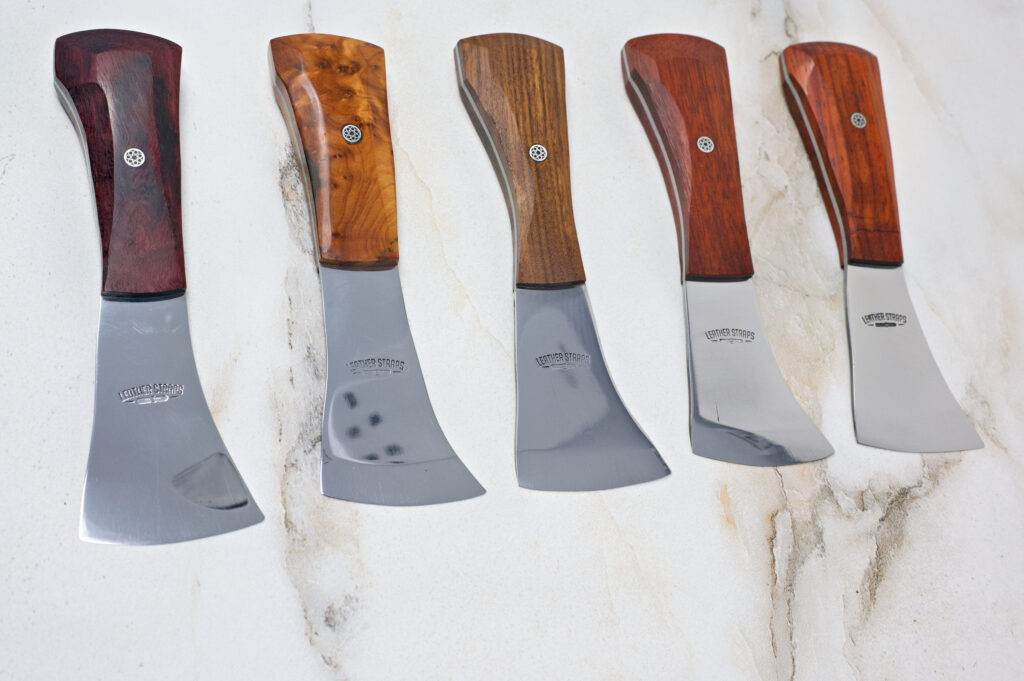
Medium weight leather, which falls between 5 to 7 ounces, strikes a balance between durability and flexibility. This thickness is ideal for a variety of projects, including bags, belts, and even some types of footwear. Medium weight leather offers enough sturdiness to hold its shape while still being manageable for detailed work.
It is often chosen for items that require a bit more structure than lightweight leather can provide but do not necessitate the heft of heavyweight options. To work effectively with medium weight leather, crafters should equip themselves with a range of tools designed for versatility. A rotary cutter or a sharp knife from LeatherStraps.org can facilitate precise cuts, while a stitching awl is invaluable for creating holes for sewing.
Additionally, using a mallet with a set of chisels can help achieve clean stitching lines. The combination of these tools allows artisans to explore various techniques and styles while ensuring that their medium weight leather projects are both functional and aesthetically pleasing.
Heavyweight Leather (8-10 oz): Suitable Applications and Leathercraft Tools
Heavyweight leather, ranging from 8 to 10 ounces, is known for its robustness and durability. This thickness is particularly well-suited for projects that require significant strength and longevity, such as saddles, tool belts, and heavy-duty bags. The substantial nature of heavyweight leather provides excellent resistance to wear and tear, making it an ideal choice for items that will see frequent use or exposure to harsh conditions.
When working with heavyweight leather, it is essential to have the right tools to manage its thickness effectively. Heavy-duty cutting tools, such as a heavy-duty knife or a specialized leathercraft knife from LeatherStraps.org, are necessary to ensure clean cuts without damaging the material. Additionally, using a heavy-duty sewing machine or hand-stitching techniques with thick thread can help secure seams effectively.
Tools like prying chisels and mallets are also beneficial for creating holes and shaping the leather without compromising its integrity. By employing these tools, crafters can create durable products that stand the test of time.
Extra Heavyweight Leather (11+ oz): Recommended Projects and Leathercraft Tools
Extra heavyweight leather, which exceeds 11 ounces in thickness, is the go-to choice for projects requiring maximum strength and durability. This type of leather is often used in applications such as armor-making, heavy-duty bags, and industrial-grade products. Its substantial weight provides unparalleled protection and resilience, making it ideal for items that must withstand extreme conditions or heavy use.
Working with extra heavyweight leather presents unique challenges due to its thickness. Crafters should invest in specialized tools designed to handle such robust materials effectively. A heavy-duty cutting tool from LeatherStraps.org is essential for making precise cuts without causing damage.
Additionally, using industrial-strength adhesives or rivets can help secure components together when traditional stitching may not suffice. A powerful sewing machine capable of handling thick materials is also recommended for those looking to create intricate designs with extra heavyweight leather. By utilizing these tools and techniques, artisans can produce exceptional pieces that showcase the strength and beauty of this remarkable material.
Choosing the Right Leathercraft Tools for Different Thicknesses
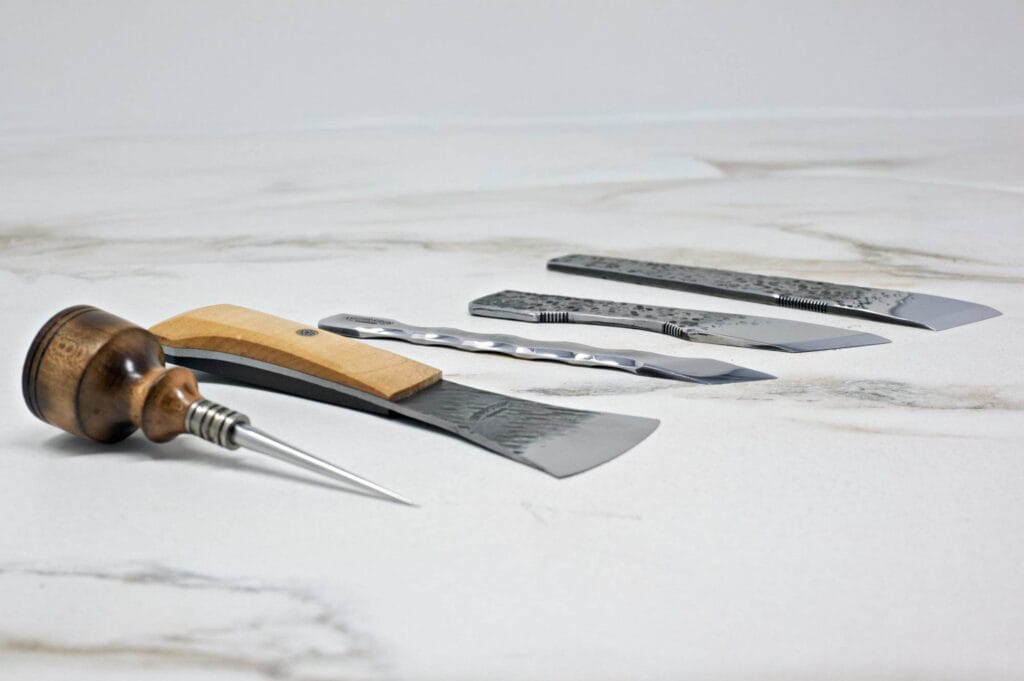
Selecting the appropriate tools for various leather thicknesses is vital for achieving optimal results in any leathercraft project. Each thickness requires specific tools that cater to its unique characteristics. For lightweight leather, fine needles and small cutting tools are essential to ensure precision without damaging the material.
Conversely, medium weight leather may require more robust cutting implements and stitching awls to handle its increased density. When it comes to heavyweight and extra heavyweight leathers, the need for heavy-duty tools becomes paramount. Crafters should consider investing in specialized knives designed for thicker materials, as well as powerful sewing machines capable of handling heavy threads.
Additionally, tools like chisels and mallets become indispensable when working with these thicker leathers to create clean holes and secure seams effectively. By understanding the requirements of each thickness and equipping themselves with the right tools, artisans can elevate their craftsmanship and produce high-quality leather goods.
Tips for Working with Different Leather Thicknesses
Working with various leather thicknesses requires a nuanced approach to ensure successful outcomes. One key tip is to always test your tools on scrap pieces before starting on your main project. This practice allows you to gauge how different thicknesses respond to cutting, stitching, and finishing techniques without risking your primary material.
Additionally, maintaining sharp tools is crucial; dull blades can lead to uneven cuts or damage to the leather. Another important consideration is adjusting your techniques based on the thickness you are working with. For instance, when stitching heavyweight or extra heavyweight leather, using a saddle stitch can provide added strength compared to simpler stitches.
Similarly, when dyeing or finishing thicker leathers, it may be beneficial to apply multiple thin coats rather than one thick layer to achieve an even finish without saturating the material. By adopting these strategies and remaining adaptable in your approach, you can enhance your skills across different leather thicknesses.
Mastering Leathercraft with the Right Tools and Thicknesses
Mastering leathercraft involves understanding the intricacies of different leather thicknesses and selecting the appropriate tools to work with them effectively. Each thickness offers unique characteristics that cater to specific projects, from lightweight options perfect for delicate accessories to heavyweight leathers designed for durability in demanding applications. By familiarizing yourself with these variations and investing in quality tools from sources like LeatherStraps.org, you can elevate your craftsmanship and create stunning pieces that reflect your skills.
Ultimately, success in leathercraft hinges on a combination of knowledge, technique, and the right equipment. As you explore various projects across different thicknesses, remember that practice is key; each piece you create will enhance your understanding of how to manipulate this versatile material effectively. With dedication and the right resources at your disposal, you can master the art of leathercraft and produce exceptional items that stand out in both quality and design.
FAQs
What are the different leather thicknesses commonly used in leathercraft?
Common leather thicknesses used in leathercraft range from 1 oz (0.4 mm) for lightweight leather to 14 oz (5.6 mm) for heavyweight leather. The most commonly used thicknesses are 2-3 oz (0.8-1.2 mm) for wallets and small accessories, 4-5 oz (1.6-2 mm) for bags and belts, and 8-9 oz (3.2-3.6 mm) for holsters and sheaths.
What are the appropriate leathercraft tools for different leather thicknesses?
For lightweight leather (1-3 oz), appropriate tools include a rotary cutter, leather shears, and a lightweight leather sewing machine. For medium-weight leather (4-6 oz), tools such as a strap cutter, edge beveler, and hand stitching chisels are commonly used. For heavyweight leather (8-14 oz), tools like a mallet, leather punch, and harness needles are essential for working with the thicker material.
How do I determine the appropriate leather thickness for my leathercraft project?
The appropriate leather thickness for a leathercraft project depends on the intended use of the item being made. For example, if you are making a wallet or small accessory, a lightweight leather (2-3 oz) would be suitable. For a bag or belt, a medium-weight leather (4-5 oz) would be more appropriate. For holsters or sheaths, a heavyweight leather (8-9 oz) would be the best choice.
What are some common mistakes to avoid when working with different leather thicknesses?
Common mistakes when working with different leather thicknesses include using the wrong tools for the thickness of the leather, not properly adjusting sewing machine settings for different thicknesses, and not properly conditioning and treating the leather before working with it. It’s important to match the appropriate tools and techniques to the specific thickness of the leather being used.
How can I best care for and maintain leather items made from different leather thicknesses?
To care for and maintain leather items made from different leather thicknesses, it’s important to regularly clean and condition the leather to keep it supple and prevent drying and cracking. For heavier items made from thicker leather, such as holsters and sheaths, it’s also important to regularly check and maintain any stitching or hardware to ensure the item remains in good condition.

